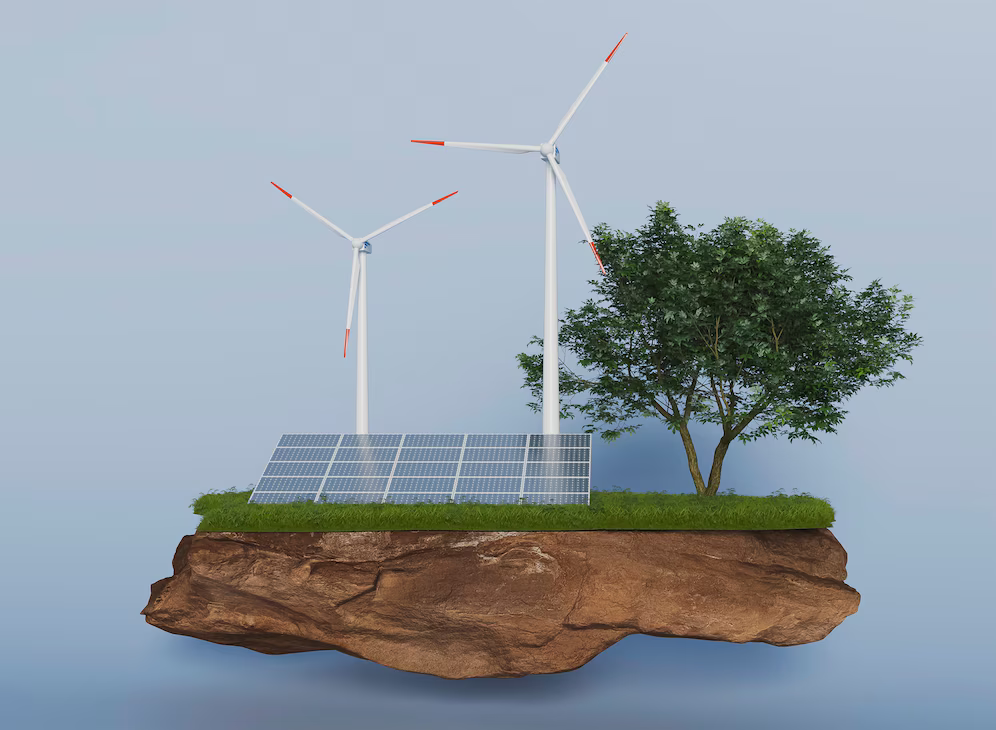The Global Need for Renewable Energy Systems
Energy policy choices will determine our planet’s fate, and we are at a crossroads. Climate change, air pollution, and the finite supply of fossil fuels have made the transition to renewable energy sources an urgent requirement, rather than a mere choice. Renewable energy systems, which produce clean, consistent power by converting energy from outside sources including the sun, wind, water, and geothermal heat, are fundamental to this shift.
It is crucial to comprehend the nature, operation, and great potential of renewable energy systems as communities, governments, and businesses unite in support of these solutions. These systems provide great hope for a more environmentally friendly and cleaner future. You will gain a thorough comprehension of the ways in which renewable energy systems might revolutionize our lives and the earth as we delve into their components, advantages, innovations, practical applications, and obstacles.
What Are Renewable Energy Systems?
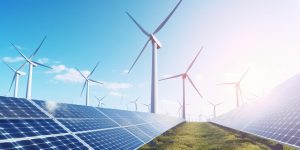
Solar, wind, water, and geothermal heat are all examples of renewable energy sources that can be harnessed through renewable energy systems. Renewable systems offer a long-term solution with less negative effects on the environment, in contrast to systems powered by fossil fuels, which release dangerous pollutants. Reducing emissions of greenhouse gases, increasing energy security, and stimulating economic growth are all made possible by these technologies.
Some of the most common renewable energy systems include:
- Solar Energy Systems (Photovoltaic panels, solar thermal systems)
- Wind Energy Systems (Onshore and offshore wind farms)
- Hydropower Systems (Dams, run-of-river plants)
- Geothermal Systems (Power plants, ground-source heat pumps)
- Biofuel Systems (Bioethanol, biodiesel production)
How Renewable Energy Systems Work: The Basics
Solar Energy Systems: Capturing the Sun’s Power
Solar energy systems use photovoltaic (PV) panels or concentrated solar power (CSP) plants to convert sunlight into electricity or heat. These systems can be small, such as residential rooftop panels, or large, like solar farms spread across acres of land.
- PV Systems: PV panels absorb sunlight and convert it directly into electricity. They are versatile, cost-effective, and suitable for various applications, from homes to commercial establishments.
- CSP Systems: CSP systems use mirrors to focus sunlight onto a receiver, converting it into heat that drives turbines to generate electricity. CSP is often used in large-scale installations.
Case Study: Morocco’s Noor Ouarzazate Solar Complex
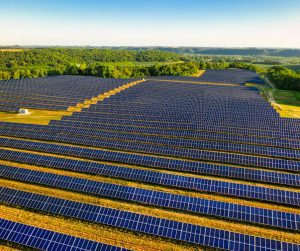
With a capacity of 580 MW, the Noor Ouarzazate Solar Complex in Morocco is one of the biggest solar systems in the world, spanning more than 3,000 hectares. As an example of the scope and promise of solar power, this facility not only provides clean power to over a million homes but also cuts annual CO₂ emissions by 760,000 tons.
Wind Energy Systems: Harnessing Wind for Power
Wind energy systems use turbines to convert the kinetic energy of wind into electricity. These systems are classified into:
- Onshore Wind Farms: Located on land, these turbines generate power efficiently and are often more economical.
- Offshore Wind Farms: Built in sea waters, these turbines benefit from stronger and more consistent winds, making them highly productive.
Latest Development: The Rise of Floating Wind Farms
Innovations in floating wind turbines are enabling energy production in deeper waters, expanding the scope for offshore wind farms. The world’s first floating wind farm, Hywind Scotland, has already demonstrated the feasibility of this technology, paving the way for massive offshore energy potential.
Hydropower Systems: Energy from Water Flow
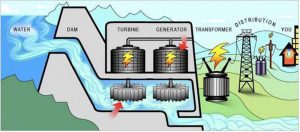
Hydropower systems generate electricity by using the flow of water. As one of the oldest and most reliable renewable energy sources, hydropower contributes significantly to the global electricity mix.
- Large Dams: Structures like the Three Gorges Dam in China have massive energy outputs, providing consistent base-load electricity.
- Run-of-River Plants: These systems divert a portion of a river’s flow through a channel or pipe, generating electricity without requiring a large reservoir, making them less disruptive to the environment.
Real-World Example: Norway’s 95% Renewable Energy Mix
Norway generates over 95% of its electricity from hydropower, demonstrating the reliability and efficiency of water-based energy systems. The country’s focus on renewable hydropower has not only reduced its carbon footprint but also created a resilient, energy-independent economy.
Geothermal Systems: Tapping Earth’s Heat
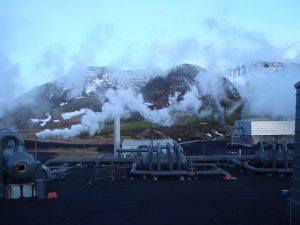
Geothermal energy systems extract heat from beneath the Earth’s surface to generate electricity or provide direct heating. Unlike solar or wind, geothermal energy is available 24/7, making it a consistent source of power.
- Geothermal Power Plants: Located in regions with high geothermal activity, these plants produce electricity by tapping into underground heat reservoirs.
- Ground-Source Heat Pumps: Used in residential and commercial heating systems, these pumps transfer heat from the ground into buildings, providing efficient heating solutions.
Example: Iceland’s Geothermal Success
Iceland generates nearly 25% of its electricity and 90% of its heating needs from geothermal energy. This showcases the immense potential of geothermal systems in achieving near-total energy independence.
Biofuel Systems: An Alternative for Transportation
Biofuel systems convert organic matter, such as crops and waste, into fuel. Bioethanol and biodiesel are commonly used for transportation, reducing reliance on fossil fuels.
- First-Generation Biofuels: Derived from food crops like corn and sugarcane.
- Second-Generation Biofuels: Made from non-food crops, algae, and agricultural waste, offering better sustainability and lower carbon emissions.
Example: Brazil’s Bioethanol Industry
Brazil’s bioethanol, made from sugarcane, meets nearly 30% of the country’s fuel needs for vehicles, making it a global leader in biofuel adoption and a model for other nations.
The Benefits of Renewable Energy Systems
Environmental Sustainability and Climate Resilience
Renewable energy systems generate power with minimal greenhouse gas emissions. By replacing fossil fuels with renewables, countries can reduce air pollution, improve public health, and slow down climate change.
Case Study: Denmark’s Wind Energy Transformation
Denmark, now generating over 40% of its electricity from wind, has significantly reduced its carbon emissions while becoming a global leader in renewable energy technologies. This transition demonstrates the ability of renewables to foster climate resilience.
Economic Growth and Job Creation
Investing in renewable energy systems drives economic growth, creates jobs, and fosters innovation. The International Renewable Energy Agency (IRENA) estimates that the sector employed over 12 million people globally in 2021, with projections indicating continued growth.
Real-World Impact: Solar Jobs in the USA
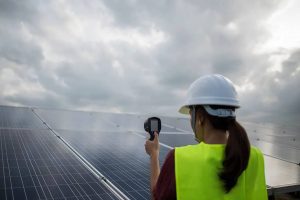
The solar industry has created more jobs in the USA over the past decade than the entire coal industry. As solar installations become more affordable and widespread, job creation continues to thrive, particularly in installation, manufacturing, and maintenance roles.
Enhanced Energy Security and Independence
Countries investing in renewables can reduce their dependency on imported fossil fuels, enhancing energy security. Solar and wind, which are widely available, allow nations to develop energy systems based on local resources.
Example: India’s Solar Energy Drive
India’s International Solar Alliance aims to expand solar power to over 120 countries, boosting energy independence while providing affordable energy to remote areas. This strategic move reduces reliance on imported fuels and creates a more secure energy framework.
Health Benefits and Improved Air Quality
Switching to renewables reduces harmful emissions like sulfur dioxide and nitrogen oxides, improving air quality and reducing health risks like asthma, heart disease, and premature death.
Case Study: Air Quality Improvement in California
California’s ambitious renewable energy goals have led to improved air quality and lower healthcare costs. The state’s transition to cleaner energy sources, particularly solar and wind, has resulted in fewer cases of respiratory diseases and hospital admissions.
Technological Innovation and Grid Flexibility

Renewable energy systems drive technological advancements in areas like energy storage (e.g., lithium-ion batteries, pumped hydro), smart grids, and microgrids. These innovations enhance the flexibility and resilience of energy systems, making them more adaptable to fluctuations in supply and demand.
Challenges of Renewable Energy Systems
Intermittency and Reliability
Solar and wind energy are intermittent, depending on weather conditions and time of day. To address this, energy storage technologies and grid management solutions are essential for ensuring a stable energy supply.
Solution: Advanced Energy Storage
Battery technologies, such as lithium-ion and solid-state batteries, have improved significantly, offering better energy storage solutions to balance renewable supply with demand. Countries like Australia and Germany have invested heavily in battery storage to complement their renewable energy systems.
High Initial Investment Costs
While renewable energy systems have low operational costs, the initial investment can be high, particularly for large infrastructure projects. However, costs are rapidly declining, with solar and wind becoming two of the cheapest forms of energy in many regions.
Land Use and Environmental Impact
Large-scale renewable projects can require significant land use, potentially affecting local ecosystems. Innovations like agrivoltaics, where crops are grown under solar panels, demonstrate how renewable systems can coexist with agriculture, maximizing land use and productivity.
The Path Forward for Renewable Energy Systems
Renewable energy systems are not only a way to fight climate change, they are also the building blocks of a safe, secure, and adaptable energy future. Countries can get big benefits for the environment, the economy, and society by using solar, wind, water, geothermal, and biofuels. To switch to renewable energy sources, we need strong policies, popular support, new technologies, and cooperation around the world. Renewable energy systems will become more important in the world’s energy landscape as prices keep going down and technology improves. The path to a future with clean energy is not only possible, it is already under way. Now is the time for people, communities, and nations to fully support the change and let renewable energy systems reach their full potential.

